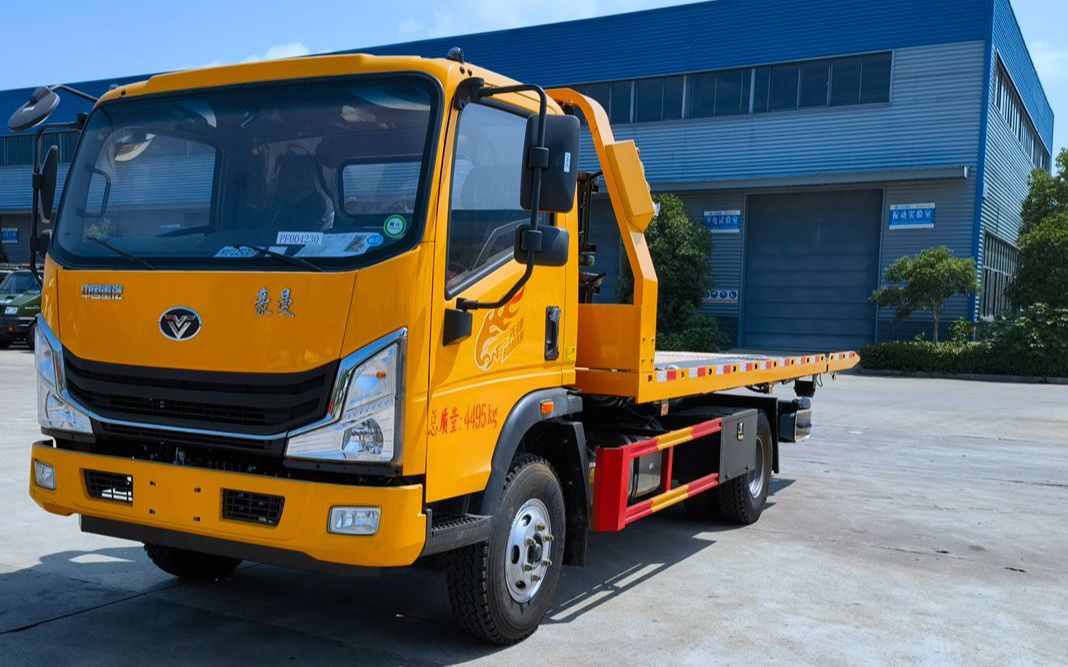Introduction:
Tanker trucks play a vital role in the transportation of various liquid and gaseous materials across different industries. These specialized vehicles are designed to safely transport and deliver large quantities of substances, such as petroleum products, chemicals, and liquefied gases. One of the key factors that determine the effectiveness of a tanker truck is its capacity, as it directly affects efficiency, cost-effectiveness, and safety. In this article, we will explore the evolution of tanker truck capacity, the factors influencing it, and the implications for various industries.
1. Historical Overview of Tanker Truck Capacity:
The concept of transporting large quantities of liquids can be traced back to the early 20th century when the demand for petroleum products increased significantly. Initially, tanker trucks had limited capacity due to technological constraints and safety concerns. The early models could carry around 2,000 to 3,000 gallons of liquid, which was sufficient for the demand at that time. However, as industries expanded, the need for larger capacities became apparent.
2. Technological Advancements and Increasing Capacity:
2.1. Material Innovations:
One of the key factors that enabled the increase in tanker truck capacity was the development of advanced materials. Traditional tanker trucks were made of steel, which limited their size and weight capacity. However, Lightweight materials for water tanks on trucks of lightweight materials, such as aluminum and fiberglass-reinforced plastic (FRP), revolutionized the industry. These materials offered enhanced strength-to-weight ratios, allowing for larger tanks without compromising safety.
2.2. Structural Design Enhancements:
In addition to material advancements, the structural design of tanker trucks underwent significant improvements. The incorporation of baffles and surge plates within the tanks helped to reduce liquid movement during transportation, preventing sloshing and improving stability. These design enhancements not only increased capacity but also enhanced safety by reducing the risk of rollovers and spills.
3. Factors Influencing Tanker Truck Capacity:

3.1. Regulatory Considerations:
Tanker truck capacity is heavily influenced by regulatory frameworks imposed by governmental agencies. These regulations aim to ensure the safe transportation of hazardous materials and prevent accidents. Factors such as road weight restrictions, axle load limits, and bridge weight capacities directly impact the maximum capacity of tanker trucks. Compliance with these regulations is crucial to maintain safety and avoid legal consequences.
3.2. Infrastructure Limitations:
Tanker truck capacity is also influenced by the infrastructure available for loading and unloading. Factors such as the size of loading docks, storage tanks, and pumping systems can limit the maximum capacity of tanker trucks. In cases where the infrastructure does not support larger capacities, companies may opt for multiple smaller tanker trucks to ensure efficient transportation.
4. Implications for Different Industries:
4.1. Petroleum Industry:
The petroleum industry heavily relies on tanker trucks for the transportation of crude oil, gasoline, diesel, and other petroleum products. The evolution of tanker truck capacity has allowed for more efficient transportation, reducing the number of trips required and minimizing logistics costs. Increased capacity has also facilitated the expansion of remote and inaccessible oil fields, ensuring a steady supply of petroleum products.
4.2. Chemical Industry:
Chemical manufacturers require the transportation of various hazardous and non-hazardous chemicals. Tanker truck capacity plays a crucial role in meeting the demand for these materials, considering their often high volume requirements. The ability to transport larger quantities reduces the need for frequent refills, optimizing production processes, and minimizing downtime.
4.3. Food and Beverage Industry:
In the food and beverage industry, tanker trucks are used to transport liquids such as milk, juices, and liquid sweeteners. The evolution of tanker truck capacity has allowed for more efficient and cost-effective transportation, enabling manufacturers to meet increasing consumer demand. Moreover, the use of specialized tanker trucks with temperature control systems ensures the preservation of product quality and freshness during transportation.
5. Safety Considerations:
While increased tanker truck capacity offers numerous benefits, safety considerations remain paramount. The larger size and weight of high-capacity tanker trucks require strict adherence to safety protocols, comprehensive driver training, and regular maintenance. The compliance with safety regulations, such as proper load securing, tank integrity inspections, and route planning, are essential to prevent accidents, spills, and environmental damage.
Conclusion:
The evolution of tanker truck capacity has revolutionized the transportation of liquids and gases in various industries. Technological advancements, material innovations, and regulatory considerations have played crucial roles in increasing capacity while maintaining safety standards. The ability to transport larger quantities has resulted in improved efficiency, reduced logistics costs, and enhanced productivity in industries such as petroleum, chemical, and food and beverage. However, safety considerations must always remain at the forefront to ensure the responsible and sustainable transportation of hazardous materials.
